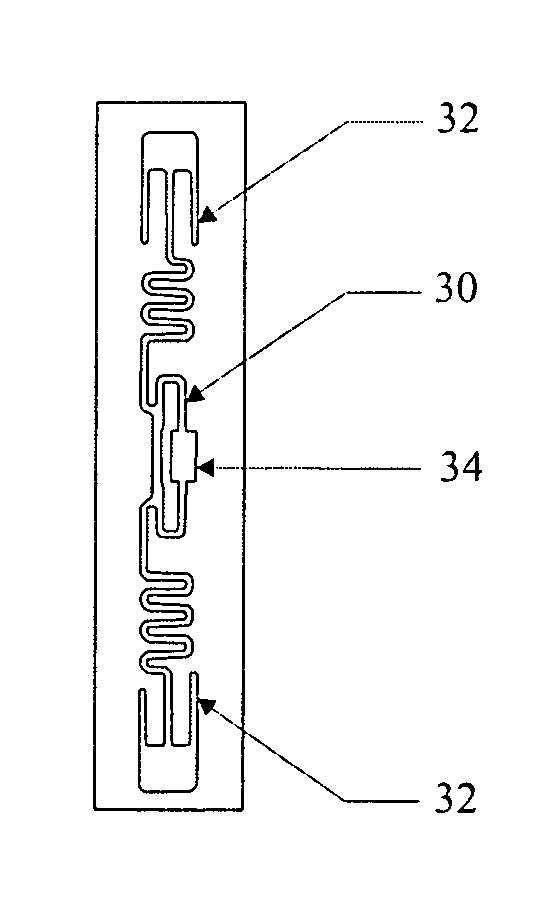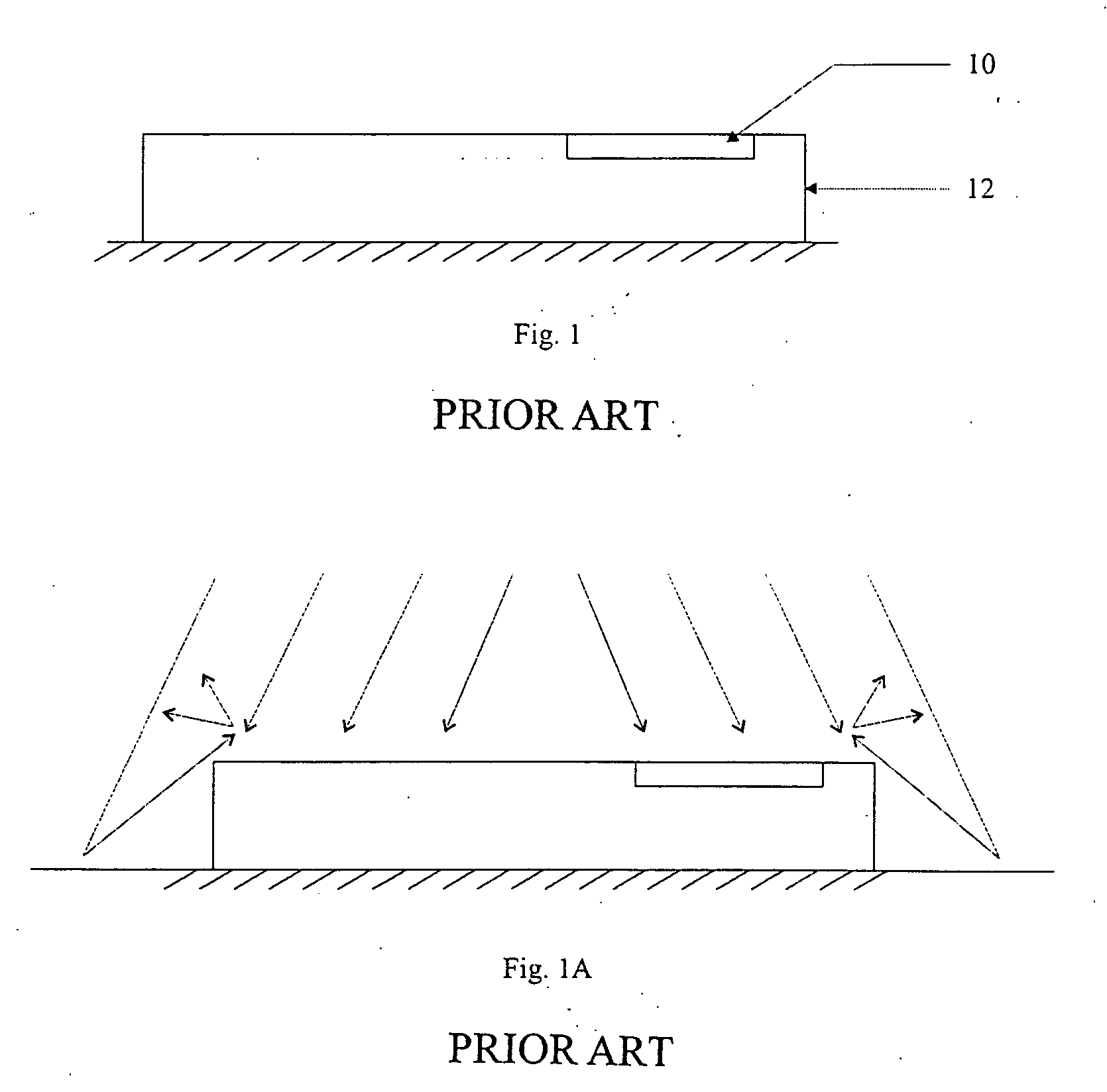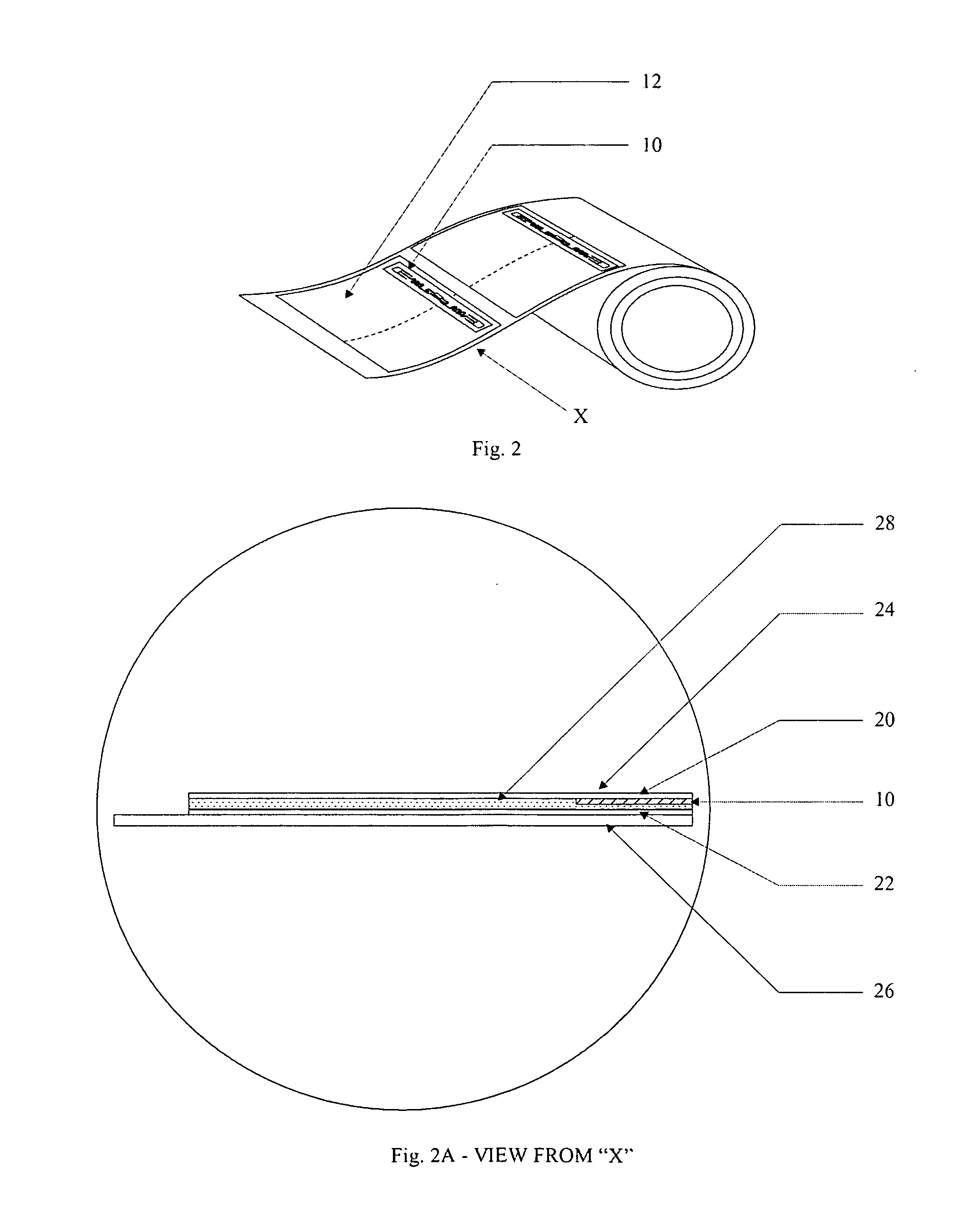RFID label readable on surfaces which interferes with RF waves and method of manufacturing the same
a technology of rfid labels and surfaces, which is applied in the field of rfid labels, can solve the problems of difficult if not impossible reading of rfid labels, difficult to read rfid labels, and rfid-appropriate applications, and achieve the effect of low cos
- Summary
- Abstract
- Description
- Claims
- Application Information
AI Technical Summary
Benefits of technology
Problems solved by technology
Method used
Image
Examples
Embodiment Construction
[0072]The inventors having studied the problems associated with reading RFID tags (10) affixed onto metallic and other surfaces which interfere with RF waves. They propose a simple yet effective method to make a RFID label (12) capable of being read even when affixed onto such surfaces.
[0073]For a better understanding of the invention, its advantages, and the objects attained by its use, reference should now be made to the accompanying drawings. The accompanying drawings illustrate one or more embodiments of the invention and together with the description herein, serve to explain the workings and principles of the invention.
[0074]FIG. 1 shows a cross section of a RFID label (12) of the prior art affixed onto an article with a surface which interferes with RF waves. The surface could be metallic or other surfaces on which the RFID labels (12) are affixed to, such as bottles, plastic bags, containers containing fluids causes interference with the RF waves
[0075]FIG. 1A is a cross secti...
PUM
 Login to View More
Login to View More Abstract
Description
Claims
Application Information
 Login to View More
Login to View More - R&D
- Intellectual Property
- Life Sciences
- Materials
- Tech Scout
- Unparalleled Data Quality
- Higher Quality Content
- 60% Fewer Hallucinations
Browse by: Latest US Patents, China's latest patents, Technical Efficacy Thesaurus, Application Domain, Technology Topic, Popular Technical Reports.
© 2025 PatSnap. All rights reserved.Legal|Privacy policy|Modern Slavery Act Transparency Statement|Sitemap|About US| Contact US: help@patsnap.com



